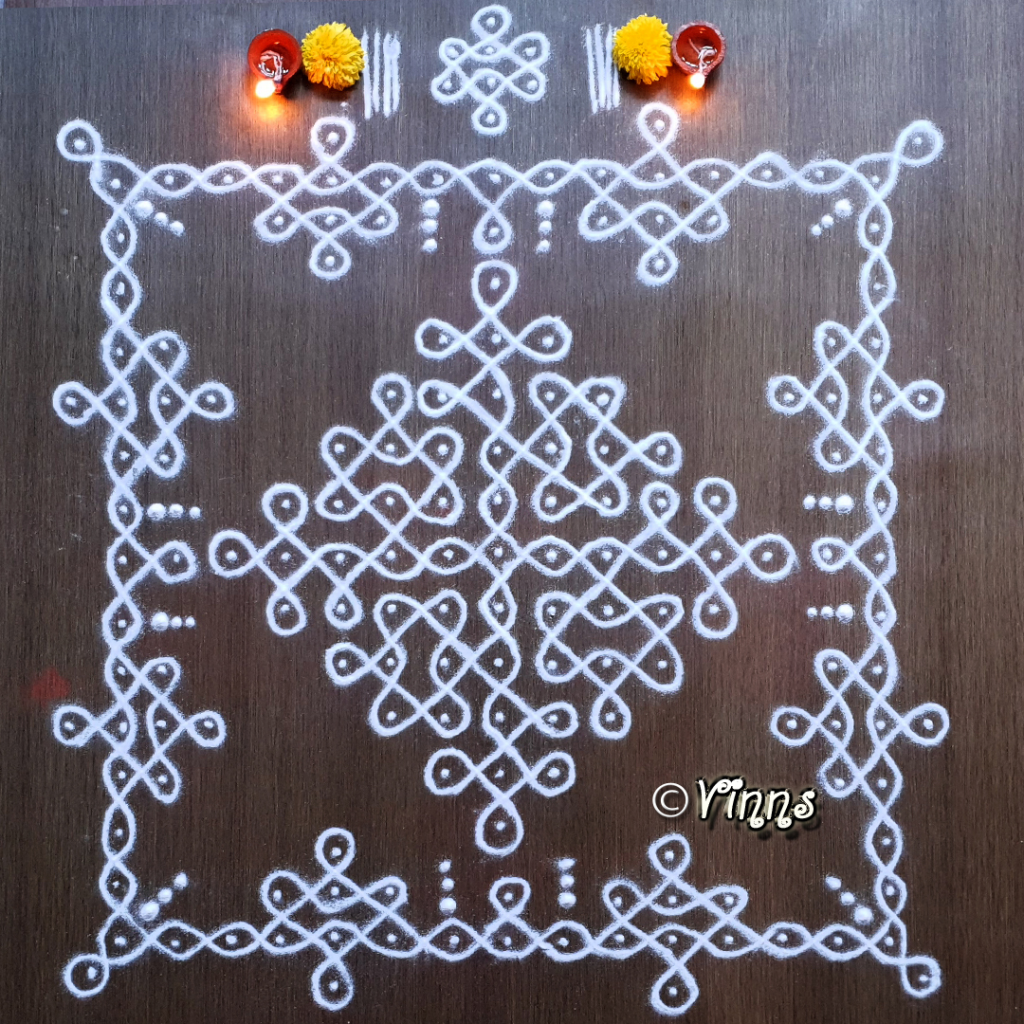In Vastu Shastra, the traditional Indian art form of Kolam or Rangoli holds a significant role. Kolam refers to the intricate and colorful geometric patterns or designs created on the ground using rice flour, colored powders, or flower petals. These designs are typically found at the entrances of homes, in front of deities, or in courtyards. Here’s a closer look at the role of Kolam/Rangoli in Vastu Shastra:

Welcoming Positive Energies:
One of the primary purposes of Kolam/Rangoli is to welcome positive energies into the home. These vibrant and aesthetically pleasing designs are believed to attract positive vibrations and harmonize the energy flow in the surroundings. By creating Kolam/Rangoli at the entrance, it is thought to invite prosperity, good fortune, and auspiciousness into the house.

Symbolic Significance:
Kolam/Rangoli designs often incorporate symbolic motifs and patterns inspired by nature, religious symbols, or cultural elements. These symbols carry deep meanings and are intended to evoke specific energies and blessings. For example, the lotus flower symbolizes purity and spiritual growth, while the peacock represents beauty and abundance. By including these symbols in the Kolam/Rangoli, individuals seek to bring forth the positive qualities associated with them.

Artistic Expression and Creativity:
Kolam/Rangoli is considered an art form that allows for creative expression. It provides an opportunity for individuals to showcase their artistic skills and add a touch of beauty to their surroundings. The act of creating Kolam/Rangoli is seen as a meditative and mindful practice that brings joy and promotes a sense of well-being.

Psychological and Emotional Impact:
The presence of Kolam/Rangoli in the home is believed to have a psychological and emotional impact on the inhabitants. The vibrant colors, intricate patterns, and the act of creating them are said to enhance positivity, promote harmony, and uplift the overall mood of individuals residing in the space. It creates a visually pleasing environment that fosters a sense of peace and tranquility.

Cultural and Traditional Significance:
Kolam/Rangoli has been an integral part of Indian culture for centuries. It holds immense cultural and traditional significance, and its practice has been passed down through generations. By continuing the tradition of creating Kolam/Rangoli, individuals connect with their cultural heritage and maintain a sense of continuity and rootedness.

Overall, Kolam/Rangoli plays a role in Vastu Shastra by enhancing the aesthetics, positive energy, and spiritual ambiance of a space. It serves as a visual representation of cultural values, creativity, and the desire to create a harmonious environment within the home.
